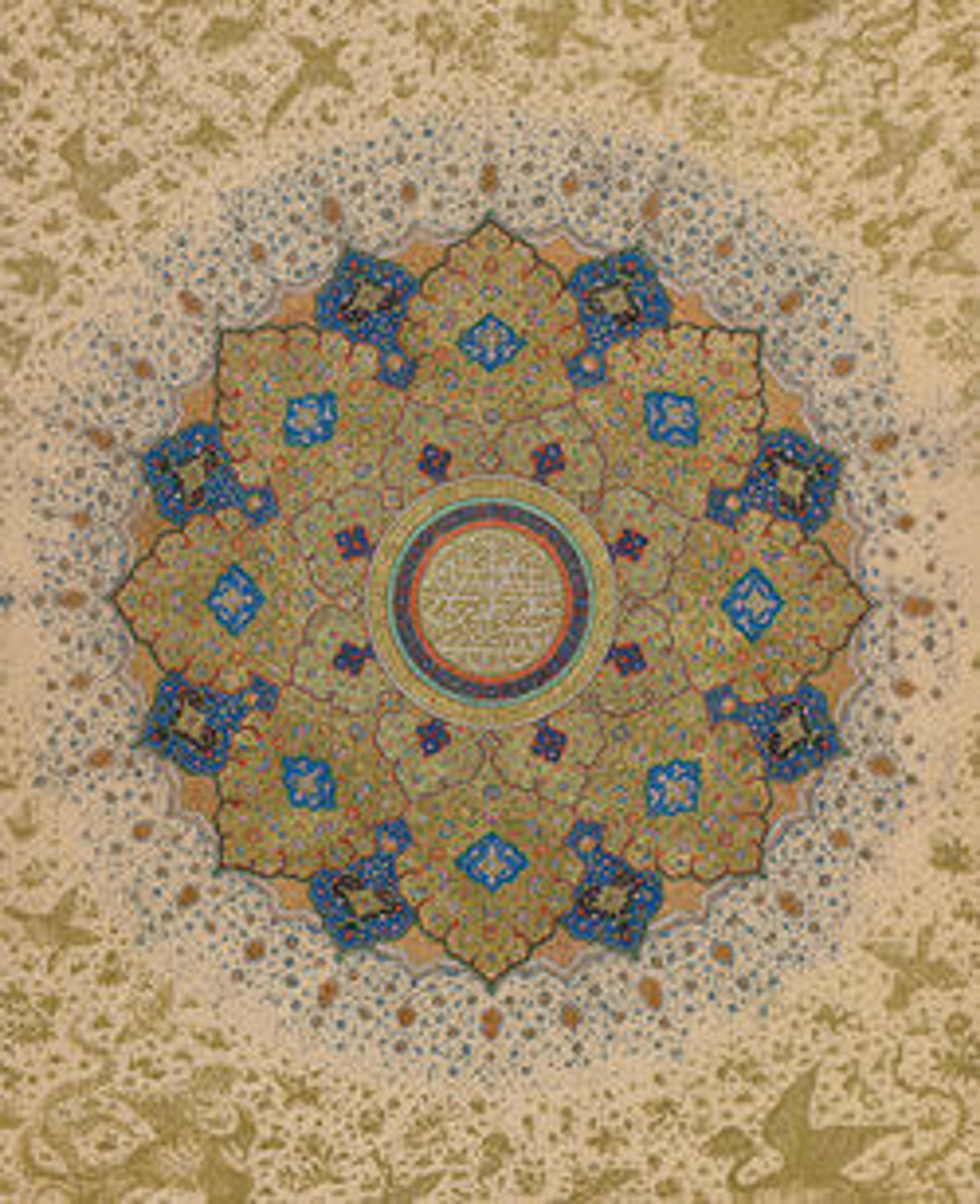Bowl with Two Facing Peacocks
Birds were a particularly popular subject in the Abbasid period, as artists in many media transformed the creatures’ beaks and wings into increasingly abstracted designs. The symmetrical pattern of two peacocks facing each other finds iconographic precedents in examples dating from the late antique and Byzantine periods, where it often carried paradisiacal connotations. The exterior is painted with a simple pattern of circles and lines. The underside of the foot is glazed and bears an Arabic inscription. Monochrome luster examples such as this were characteristic of the "second phase" of Abbasid lusterware, which developed in centers in Iraq in the tenth century.
Artwork Details
- Title:Bowl with Two Facing Peacocks
- Date:second–third quarter 10th century
- Geography:Made in Iraq, probably Basra
- Medium:Earthenware; luster-painted on opaque white glaze
- Dimensions:H. 3 3/4 in. (9.5 cm)
Diam. 12 1/8 in. (30.5 cm) - Classification:Ceramics
- Credit Line:Fletcher Fund, 1964
- Object Number:64.134
- Curatorial Department: Islamic Art
More Artwork
Research Resources
The Met provides unparalleled resources for research and welcomes an international community of students and scholars. The Met's Open Access API is where creators and researchers can connect to the The Met collection. Open Access data and public domain images are available for unrestricted commercial and noncommercial use without permission or fee.
To request images under copyright and other restrictions, please use this Image Request form.
Feedback
We continue to research and examine historical and cultural context for objects in The Met collection. If you have comments or questions about this object record, please contact us using the form below. The Museum looks forward to receiving your comments.
